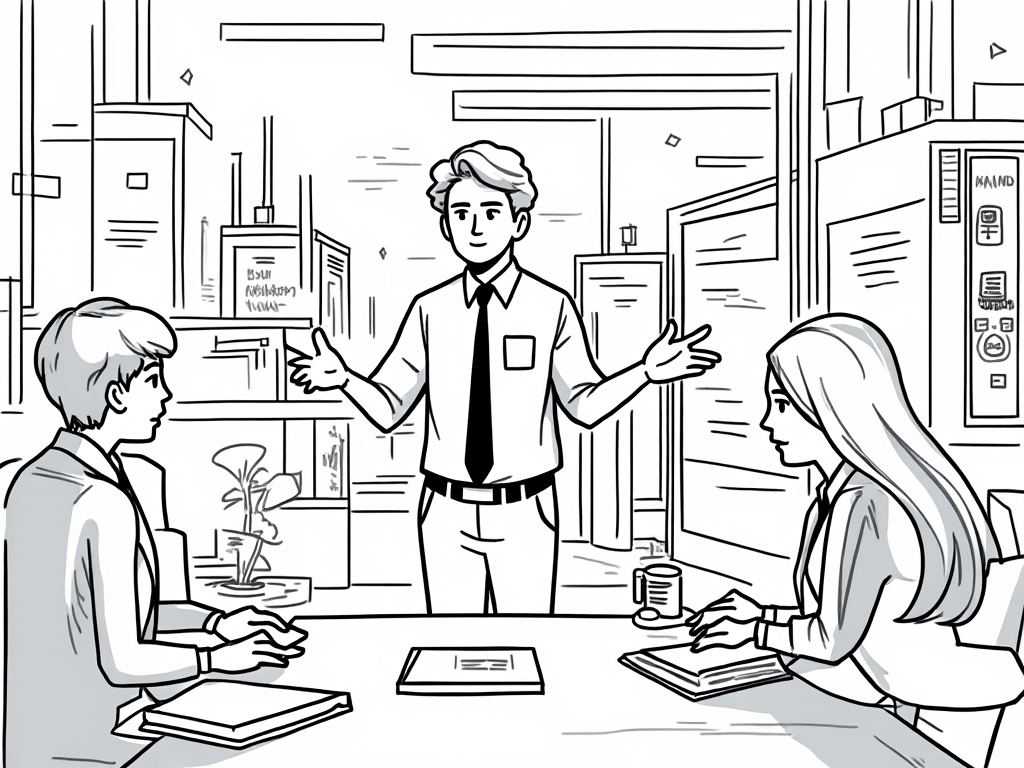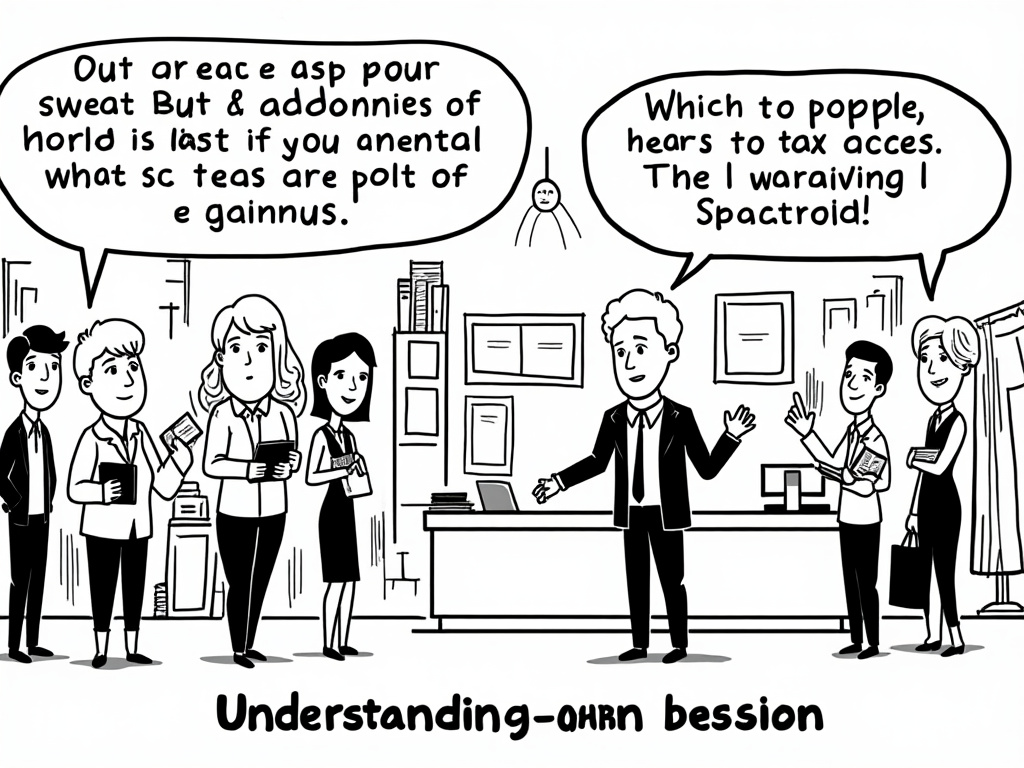
UAE Sewerage Systems: Engineering Marvels in Desert Infrastructure
Reading time: 12 minutes
Table of Contents
- Introduction to UAE’s Sewerage Challenge
- Historical Evolution of UAE Sewerage Infrastructure
- Current Infrastructure Overview
- Technological Innovations in UAE Sewerage Systems
- Sustainability Measures and Water Reclamation
- Challenges and Future-Proofing Strategies
- Case Studies: Success Stories in UAE Sewerage Development
- Future Developments and Infrastructure Plans
- Your Infrastructure Compass: Navigating UAE’s Sewerage Advancements
- Frequently Asked Questions
Introduction to UAE’s Sewerage Challenge
Ever wondered how a nation built on desert sands manages wastewater for millions of residents and skyscrapers? The United Arab Emirates has transformed this fundamental infrastructure challenge into an opportunity for engineering excellence.
The UAE’s sewerage systems represent more than just pipes underground—they’re the invisible lifelines of urban development in one of the world’s most rapidly expanded regions. When Dubai’s population exploded from approximately 183,000 in 1975 to over 3.5 million today, the pressure on wastewater infrastructure didn’t just increase—it fundamentally transformed.
Let’s face it: sewerage infrastructure isn’t glamorous, but in the UAE, it’s nothing short of revolutionary. A country where water scarcity is a defining national security issue has pioneered systems that not only manage wastewater but reclaim it as a precious resource.
Think about this scenario: You’re developing a new residential community in Dubai. What sewerage considerations should top your priority list? This isn’t just about compliance—it’s about contributing to national sustainability while ensuring your development maintains world-class infrastructure standards.
Historical Evolution of UAE Sewerage Infrastructure
The journey of UAE’s sewerage infrastructure mirrors the nation’s remarkable development story. In the 1960s and early 1970s, before the UAE’s formation, rudimentary septic tanks and basic disposal methods were the norm. Wastewater management was localized and limited in scope—a far cry from today’s sophisticated networks.
The first major leap came in the late 1970s with Abu Dhabi’s initial sewerage master plan, which laid the groundwork for systematic wastewater collection and treatment. Dubai followed in the 1980s with its first comprehensive sewerage system, designed when the emirate was still considering its future growth trajectory.
By the 1990s, as urbanization accelerated, these systems faced mounting pressure. The turning point came when leadership recognized that conventional infrastructure expansion couldn’t keep pace with population growth. This realization sparked the ambitious infrastructure vision we see manifested today.
As Eng. Abdullah Al Hashimi, Director of Sewerage and Drainage at Dubai Municipality, noted in a 2019 infrastructure conference: “What distinguishes UAE’s approach is that we didn’t just build bigger systems—we built smarter ones. Our infrastructure leapfrogged several developmental stages that other nations spent decades navigating.”
Current Infrastructure Overview
Major Treatment Facilities
The UAE has invested billions in developing state-of-the-art sewage treatment plants (STPs) across the emirates. These facilities don’t just process wastewater—they transform it into valuable resources.
The Jebel Ali Sewage Treatment Plant in Dubai stands as one of the Middle East’s largest facilities, with a capacity exceeding 375,000 cubic meters daily. This plant doesn’t simply treat wastewater—it produces irrigation-quality water that maintains Dubai’s green spaces while simultaneously generating biogas that powers parts of the facility itself.
Abu Dhabi’s Al Wathba treatment complex represents another engineering marvel, utilizing advanced tertiary treatment processes to serve the capital’s growing demands. The facility incorporates microfiltration and ultraviolet disinfection technologies that produce water clean enough for agricultural use.
Smaller emirates haven’t been left behind. Sharjah’s industrial areas benefit from dedicated treatment facilities designed to handle specialized industrial wastewater, while the northern emirates have developed regional treatment solutions adapted to their specific population densities and geographical challenges.
What’s particularly innovative is the integration of these facilities with broader utility networks. Many treatment plants now coordinate operations with power and water authorities to optimize resource recovery and energy efficiency across multiple utility sectors.
Strategic Tunnel Networks
Perhaps the most ambitious component of UAE’s sewerage infrastructure is its network of deep tunnel systems. These aren’t ordinary sewers—they’re engineering feats that have redefined urban wastewater management globally.
Dubai’s Deep Tunnel Storm Water System (DTSWS) stretches for 10km and is designed to handle 110 cubic meters of stormwater per second. When completed, this system will drain 40% of Dubai’s urban areas, addressing the perennial flooding challenges in a region where rain is rare but intense.
The Strategic Tunnel Enhancement Program (STEP) in Abu Dhabi represents one of the world’s largest gravity-driven wastewater networks. At 41km long and up to 80 meters below ground, this tunnel eliminated the need for 35 pumping stations, reducing energy consumption and operational costs while serving 1.7 million residents.
These tunnels incorporate “smart infrastructure” elements—advanced sensors monitor flow rates, detect potential blockages, and analyze wastewater composition in real-time. This data-driven approach enables predictive maintenance and efficient resource allocation.
| Project Name | Location | Capacity | Investment (AED) | Key Innovation |
|---|---|---|---|---|
| Strategic Tunnel Enhancement Program (STEP) | Abu Dhabi | 1.7 million residents | 5.7 billion | Deep gravity tunnel eliminating 35 pumping stations |
| Jebel Ali Sewage Treatment Plant | Dubai | 375,000 m³/day | 1.3 billion | Biogas recovery for energy self-sufficiency |
| Deep Tunnel Storm Water System | Dubai | 110 m³/second | 10.3 billion | AI-driven predictive flood management |
| Al Wathba Treatment Complex | Abu Dhabi | 430,000 m³/day | 2.4 billion | Advanced tertiary treatment with UV disinfection |
| Sharjah Industrial Treatment Facility | Sharjah | 120,000 m³/day | 950 million | Specialized industrial waste processing capabilities |
Technological Innovations in UAE Sewerage Systems
The UAE has positioned itself at the forefront of sewerage technology adoption, implementing solutions that were considered experimental just years ago.
Smart monitoring systems now pervade the network, with over 10,000 IoT sensors deployed across Dubai’s sewerage infrastructure alone. These sensors don’t just detect issues—they predict them. Using machine learning algorithms, the system can forecast potential blockages up to 72 hours before they occur, allowing for preventive maintenance rather than emergency response.
Innovative construction techniques have also revolutionized infrastructure development. When Dubai needed to expand sewerage capacity in densely populated areas, traditional excavation would have caused unacceptable disruption. Instead, microtunneling technology allowed for underground construction with minimal surface impact, preserving business continuity in vital commercial districts.
The integration of renewable energy into sewage treatment represents another innovation frontier. The Al Warsan Sewage Treatment Plant now generates 5.7 megawatts of power from biogas produced during the treatment process—enough to meet 31% of the plant’s energy needs.
As Dr. Mohammed Al Mulla, Director of Dubai’s Sewerage Department explains: “We’ve moved beyond thinking of sewage as waste to be disposed of. In modern UAE infrastructure, it’s a resource to be harvested—for water, for energy, and even for valuable byproducts like biosolids that support agricultural development.”
Wastewater Treatment Capacity by Emirate (Million m³/day)
1.3
1.1
0.4
0.3
Sustainability Measures and Water Reclamation
In a region where freshwater is more precious than oil, the UAE has transformed its sewerage infrastructure into a critical component of water security strategy.
Treated sewage effluent (TSE) has become a cornerstone of the UAE’s water portfolio. Currently, the country reuses approximately 79% of its treated wastewater, primarily for landscape irrigation, district cooling, and industrial processes. The target is to reach 95% reuse by 2030—an ambitious goal that would place the UAE among global leaders in water reclamation.
Consider this practical application: Dubai’s iconic Burj Khalifa district uses TSE for all its cooling towers, saving approximately 13 million gallons of desalinated water daily. This isn’t just environmentally sound—it’s economically shrewd, reducing operational costs by an estimated 30% compared to using desalinated water.
The quality standards for this reclaimed water continue to improve. Advanced treatment processes now produce water that exceeds international irrigation standards, with some facilities implementing membrane bioreactor technology capable of pharmaceutical removal and virus elimination.
Beyond water reuse, the UAE has implemented circular economy principles throughout its sewerage management. Biosolids from treatment plants are processed into agricultural fertilizers, while methane capture systems turn treatment byproducts into energy. The Al Wathba Wetland Reserve in Abu Dhabi stands as living proof of this philosophy—a thriving ecosystem created through the strategic discharge of high-quality treated wastewater.
Challenges and Future-Proofing Strategies
Despite remarkable progress, UAE’s sewerage infrastructure faces significant challenges that require continuous innovation and adaptation.
The first challenge is rapid population growth coupled with tourism fluctuations. Dubai’s population can swell by over 15% during peak tourism seasons, creating significant demand variations that infrastructure must accommodate. The solution has been to design systems with substantial operational flexibility—treatment plants capable of scaling capacity up or down by 30% without efficiency losses.
Climate change poses another critical challenge through changing rainfall patterns. While historically rare, intense rainfall events are becoming more common, as evidenced by the 2022 floods that delivered a year’s worth of rainfall in a single day. Infrastructure planners have responded by developing hybrid systems that can handle both sewage and stormwater during extreme events, along with sophisticated detention basins that can temporarily store excess water.
Industrial wastewater complexity presents a third challenge. The UAE’s diversifying economy generates increasingly specialized industrial waste streams that conventional treatment processes aren’t designed to handle. Authorities have implemented stringent pre-treatment requirements for industrial facilities while developing specialized treatment capabilities for sectors like petrochemicals and manufacturing.
Future-proofing strategies include modular design approaches that allow for easier expansion and technology upgrades without system disruption. Dubai’s latest sewerage master plan explicitly incorporates 20% additional capacity beyond projected needs to accommodate unforeseen developments, while Abu Dhabi has pioneered “infrastructure corridors” that reserve underground space for future expansion.
Case Studies: Success Stories in UAE Sewerage Development
Case Study 1: Dubai’s Parallel Network Strategy
When Dubai faced sewerage capacity constraints in its rapidly developing Business Bay area, engineers were confronted with a complex challenge: how to expand infrastructure in an area already densely developed with minimal disruption to business operations.
The solution was innovative—instead of replacing or enlarging existing lines, Dubai Municipality implemented a parallel network strategy. New high-capacity lines were installed alongside existing infrastructure using horizontal directional drilling to minimize surface disruption. This approach maintained 97% of business operations at normal capacity during construction while ultimately increasing sewerage capacity by 300%.
The parallel network was also designed with smart redundancy—if one line requires maintenance, flow can be automatically diverted to parallel lines without service interruption. This approach has since become a model for urban infrastructure expansion across the region.
Case Study 2: Abu Dhabi’s Al Wathba Bioreactor Systems
Abu Dhabi’s Al Wathba treatment plant pioneered the large-scale implementation of membrane bioreactor (MBR) technology in the region. This advanced treatment process combines conventional biological treatment with membrane filtration, producing exceptionally high-quality effluent.
The implementation wasn’t without challenges. Initial operations revealed membrane fouling rates 40% higher than anticipated due to the unique characteristics of local wastewater. Engineers responded by modifying the pre-treatment process and developing a custom cleaning regime that extended membrane life by 30% beyond manufacturer specifications.
The results have been remarkable—water quality consistently exceeding standards for unrestricted irrigation use, with turbidity below 0.2 NTU and total coliform counts of less than 2.2/100ml. This success has positioned Abu Dhabi as a knowledge leader in MBR technology implementation for arid regions.
Future Developments and Infrastructure Plans
The UAE’s vision for sewerage infrastructure extends decades into the future, with plans that embrace both expansion and technological transformation.
Dubai’s 2050 Sewerage Master Plan anticipates population growth to 7.8 million and incorporates ambitious recycling targets, aiming to reuse 100% of treated wastewater. The plan includes the development of a “fifth-generation” treatment plant in Jebel Ali that will not only process wastewater but also extract valuable resources like nitrogen and phosphorus for industrial applications.
Abu Dhabi’s Strategic Tunnel Enhancement Program Phase II is already underway, extending the gravity tunnel system to serve the emirate’s expanding western regions. This extension incorporates lessons learned from the initial phase, with enhanced sensor networks and maintenance access points.
Perhaps most forward-thinking is the integration of sewerage infrastructure with broader smart city initiatives. By 2025, Dubai aims to connect all major sewerage assets to a centralized AI-powered management platform that will optimize operations based on real-time demand patterns, weather forecasts, and even major event schedules.
These developments reflect a fundamental shift in infrastructure philosophy, as expressed by HE Saeed Mohammed Al Tayer, Managing Director & CEO of Dubai Electricity and Water Authority: “We are no longer building separate utility systems—water, electricity, sewerage—but rather integrated resource networks that communicate and optimize collectively. Yesterday’s wastewater is tomorrow’s irrigation supply and potentially next week’s energy source.”
Your Infrastructure Compass: Navigating UAE’s Sewerage Advancements
The UAE’s sewerage journey offers valuable insights for infrastructure developers, urban planners, and sustainability professionals worldwide. Here’s your roadmap for understanding—and potentially contributing to—this remarkable infrastructure evolution:
- Embrace Integrated Infrastructure Thinking – The most successful UAE sewerage projects view wastewater not as isolated flows but as part of interconnected urban systems. Consider how your infrastructure projects can create synergies across utility networks.
- Prioritize Resilience Through Redundancy – UAE systems incorporate strategic redundancies that maintain functionality during maintenance or emergencies—a critical consideration for essential infrastructure in challenging environments.
- Leverage Data for Predictive Operations – The transformation from reactive to predictive maintenance has saved UAE authorities millions in operational costs. Implementing similar sensor networks and analytics capabilities should be standard practice for modern infrastructure.
- Design for Resource Recovery – The most forward-thinking UAE facilities are designed from conception as resource recovery plants, not waste treatment facilities. This fundamental perspective shift creates both environmental and economic benefits.
- Plan Beyond Projected Needs – UAE infrastructure consistently incorporates capacity beyond immediate projections, creating systems that accommodate unexpected growth without requiring constant disruptive upgrades.
The UAE’s sewerage infrastructure stands as testament to what’s possible when necessity drives innovation. From rudimentary systems to global benchmarks in just five decades, this transformation demonstrates how even the most fundamental infrastructure can become a platform for sustainability leadership.
What sewerage innovations from the UAE might benefit your local infrastructure context? Whether you’re developing new projects or upgrading existing systems, the principles of integrated planning, resource recovery, and technological adaptability that define UAE’s approach offer valuable guidance for infrastructure development worldwide.
Frequently Asked Questions
How does the UAE manage sewerage infrastructure in remote or less populated areas?
For remote areas and smaller communities, the UAE has implemented a network of decentralized package treatment plants that provide localized sewage treatment without requiring connection to main urban networks. These compact facilities utilize scaled-down versions of advanced treatment technologies, including membrane bioreactors and constructed wetlands specifically adapted to desert conditions. The treated water is typically used for local irrigation, creating green spaces that would otherwise be unsustainable. In the most remote locations, authorities have deployed solar-powered treatment units that operate independently of the grid, providing essential services while maintaining the UAE’s sustainability commitments.
What technological innovations are being tested for future implementation in UAE sewerage systems?
Several cutting-edge technologies are currently undergoing pilot testing across UAE facilities. These include direct potable reuse systems that can purify wastewater to drinking water standards, utilizing advanced oxidation processes and multi-stage membrane filtration. Nanotechnology applications for contaminant removal, particularly for emerging pollutants like pharmaceuticals, are being evaluated at Sharjah’s research treatment facility. Perhaps most promising is the integration of algal bioreactors that simultaneously treat wastewater while producing valuable biomass for biofuel production. Dubai Municipality has also established an innovation incubator specifically for sewerage technologies, where promising startups can test solutions in real-world conditions before wider implementation.
How are UAE sewerage systems designed to handle the unique challenges of desert environments?
UAE sewerage infrastructure incorporates several desert-specific adaptations. High-density polyethylene pipes with enhanced UV protection and heat-resistant properties prevent degradation in extreme temperatures, while all aboveground facilities utilize specialized cooling systems to maintain optimal operational temperatures for biological treatment processes. To address sand infiltration, which can cause significant operational issues, entry points feature advanced filtration systems and settlements chambers that trap sand before it enters main systems. Treatment processes are also modified to handle the relatively high salinity of UAE wastewater, with specialized bacteria cultivated to thrive in these conditions. Additionally, all critical infrastructure is designed with dust-mitigation systems to protect sensitive electronic components and mechanical equipment from the region’s frequent dust storms.


